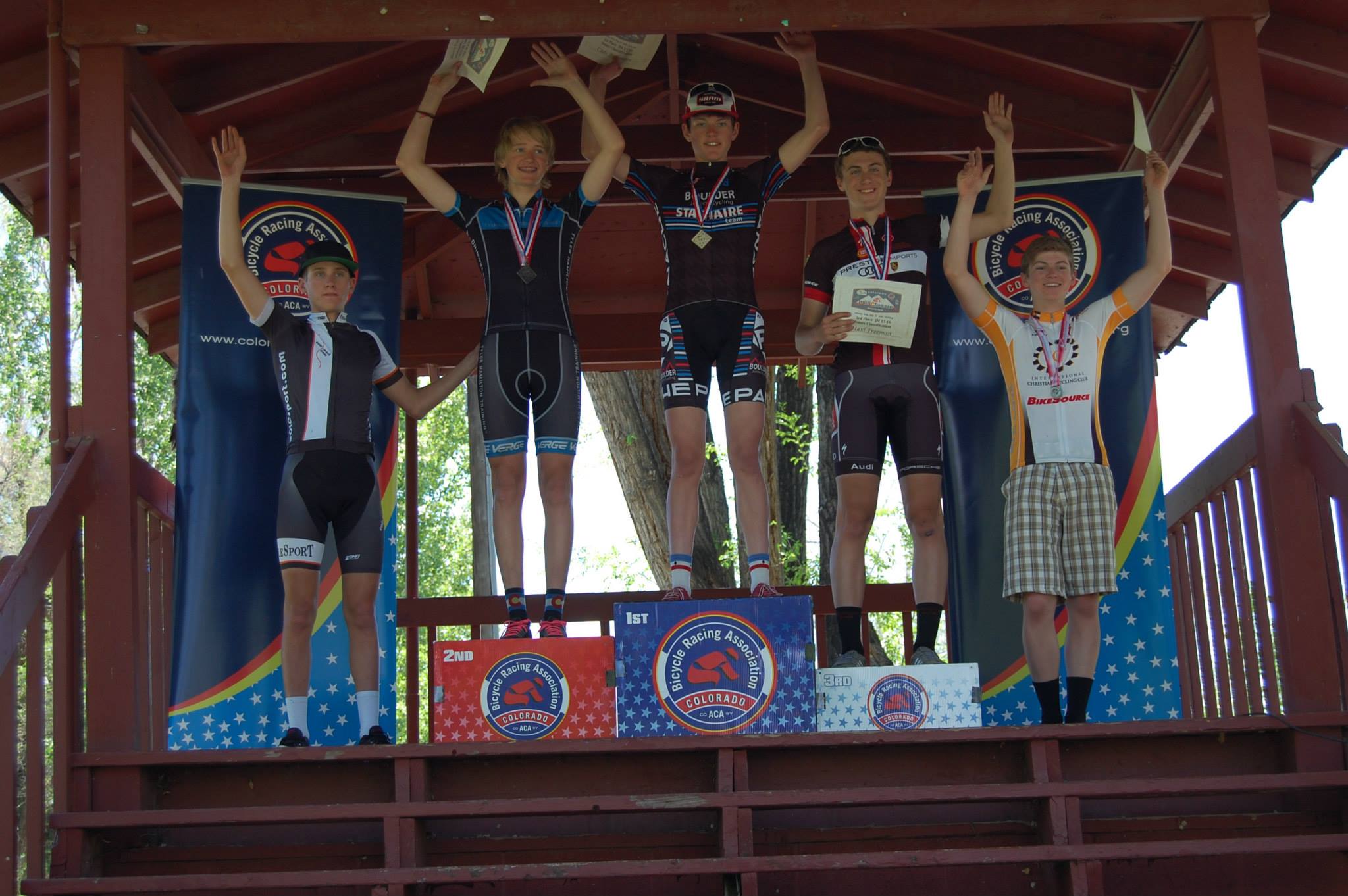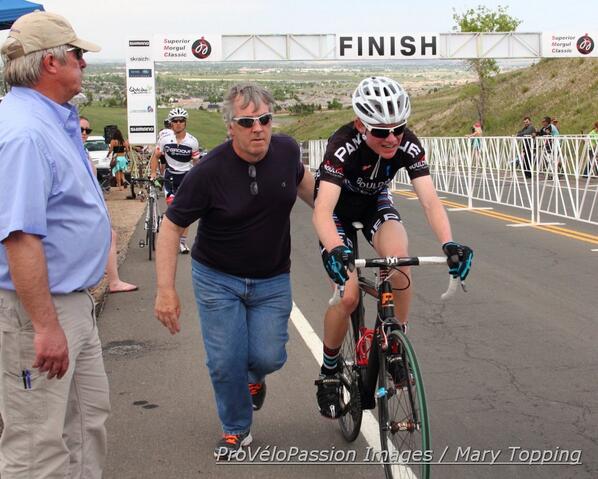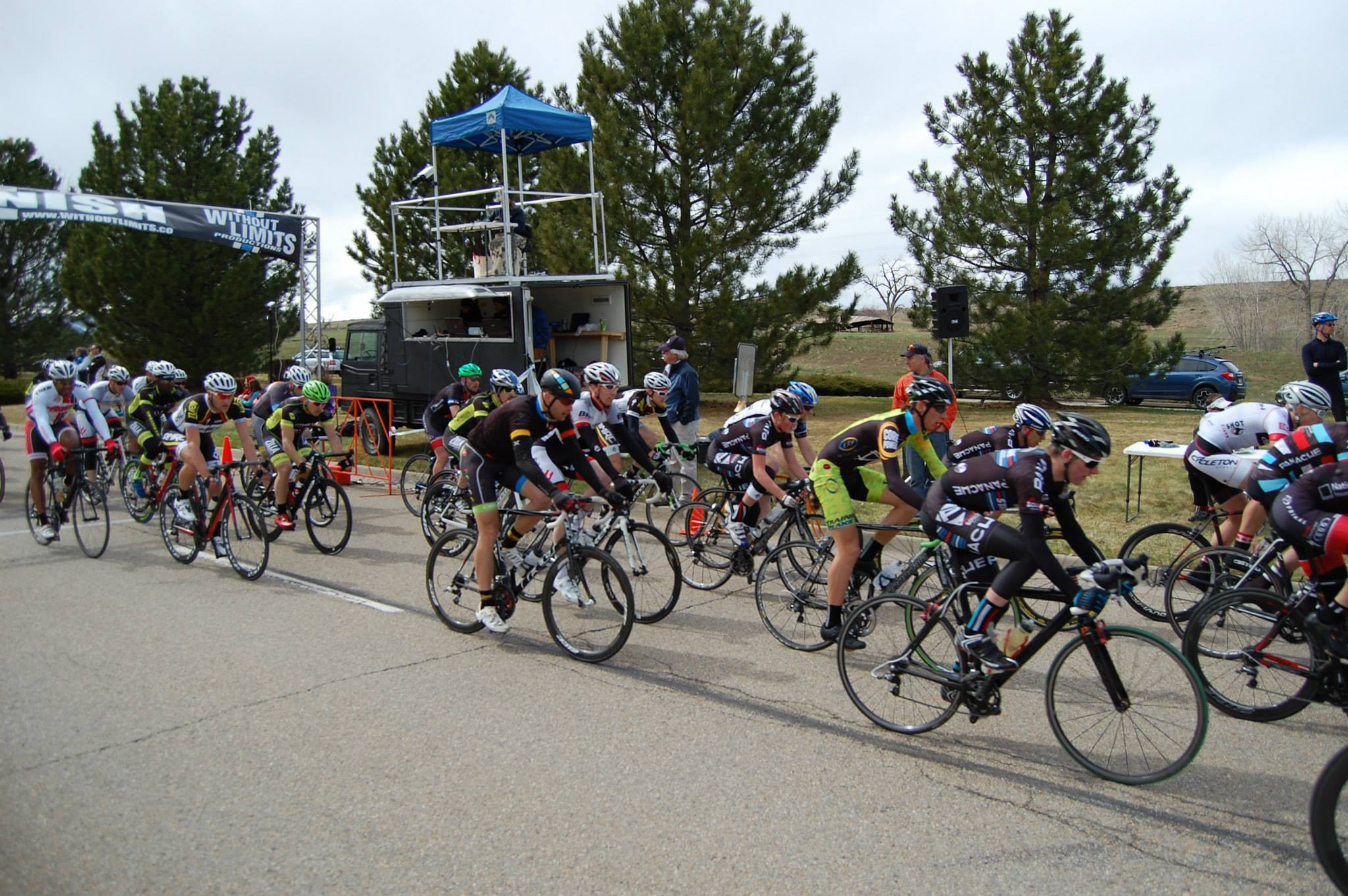| ||||||||
|
(December 30, 2013) Cyclocross, 'cross or cx, is a discipline of cycling which, in a way, combines road cycling with mountain biking, and adds elements of it's own. A cyclocross bike looks very similar to a road bike, although the tires are knobby, and a little bit wider, although smaller than on a mountain bike, the brakes are different to accommodate a larger tire, the fork and stays are widened to accommodate a larger tire, and also disc brakes are also becoming common among cyclocross bikes. Races take place on a 2.5 km to 3.5 km long loop which often contains grass, dirt, pavement, gravel, sand, and obstacles which require most riders to dismount their bikes and run with their bikes, although some can be "bunny-hopped" over by skilled riders. Races are held snow, rain, or shine, although a race sanctioned by the UCI (Union Cycliste Internationale), the international cycling union, cannot be started at a temperature less than -15° C, or 5°F. Races are often muddy, snowy, and slick and many racers and spectators alike consider these "real 'cross conditions." Also present at all big races and many local races is the fan favorite, a beer garden (for if you are over 21 of course). A cyclocross course, as I mentioned earlier, is 2.5 to 3.5 kilometers in length and is always a loop, and contains many different surfaces. Most riders test different tires on the course, along with different tire pressures, to see what gives them the most traction on the particular course. All professional riders, and local riders who have enough money and interest, have at least two cyclocross bikes, and 1 or 2 are put in the pit, and most will have a pit crew who will hand them a new bike on the fly mid-race, and the crew will clean the bike if it is muddy, and make adjustments which the rider generally calls out. The pit has 2 entrances per lap and you may not go backwards on the course or shortcut the course to get to it. Also present on a 'cross course are obstacles such as stairs, barriers which are no more than 40 cm or just short of 16" tall which are often bunny-hopped by many of the elite racers, "run-ups" which are sections which are too steep to ride up, sand, and others. Most courses do not contain all of these terrains or all of these types of barriers, but they do contain a few and many times multiple of one type. Cyclocross is much more popular in Europe than it is in the US, with most races, even local ones, having over 5,000 spectators. The 2012 World Championships in Koksijde, Belgium, had over 60,000 spectators, and the top 7 elite men's spots were taken by the Belgians. The World Championships always take place at the very end of January or the very beginning of February, so the 2012 championships were for the season which took place mostly in 2011. The 2013 World Championships took place in Louisville, Kentucky, and were the first to take place outside of the US, and had a mere 10,000 spectators in comparison to the 60,000 of the year before. However, they drew more UCI attention to the US and now there is interest to put World Cup and other major series races in the US. It also has created some interest in doing more racing in the US for some of the best European riders. Along with that, cyclocross inside the US is growing, with more and more racers coming out every year all over the US. Cyclocross is growing quickly and it is an awesome sport both to watch, and to race. There are many local races all over the US which take place every weekend, with over 30 each year in Colorado. Take a look at some of my links if you would like more info. I suggest you get involved in cyclocross, and be a part of it's expansion. If you have any questions, email me at gcadeb@gmail.com. |
I am actively looking for sponsors. Contact me if you want me to test your products. |
||||||
| © 2016 - Cade Bickmore - All rights reserved | ||||||||



